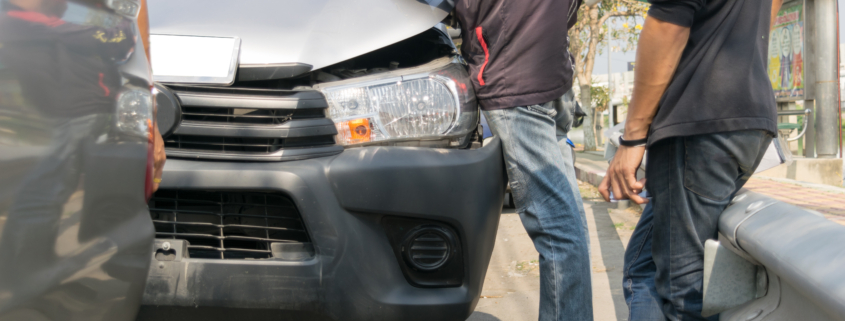Who is at Fault in a Rear-End Collision in Alabama?
Understanding who is at fault in a rear-end collision in Alabama is crucial for handling the aftermath effectively. With the presumption of fault typically falling on the driver of the rear vehicle and the strict contributory negligence rule in Alabama, it is important to go over the nuances of liability in these situations. From exceptions where the front driver may be responsible for protecting your rights and seeking legal help, there are various aspects to consider when involved in a rear-end collision.
Why the Rear Driver is Usually Liable
Rear-end collisions are typically attributed to the actions of the driver in the back. The fundamental principle is that the driver should be able to stop in time to avoid a collision. If a driver fails to maintain a safe distance or reacts too slowly to changes in traffic flow, they are likely to be held accountable for the accident.
In the context of rear-end collisions, the concept of safe following distance is crucial. This refers to the space between your vehicle and the one in front of you, allowing for ample reaction time in case of sudden stops or changes in traffic. Maintaining a safe following distance is key to avoiding rear-end collisions and demonstrating responsible driving behavior.
Contributory Negligence and its Impact on Claims
Some states operate under a contributory negligence rule, where even a small percentage of fault on the part of the claimant can bar them from receiving any compensation. Alabama is one such state with a strict approach to determining fault in rear-end collisions.
Alabama’s Strict Approach to Fault
Fault in rear-end collisions in Alabama is typically placed on the driver of the rear vehicle. This is due to the expectation that drivers should maintain a safe following distance and be able to react to traffic ahead. Alabama’s contributory negligence law means that if the claimant is found even slightly at fault, they may not be able to recover any damages for their injuries.
Exceptions to the Rule: When the Front Driver May Be Liable
After a rear-end collision in Alabama, the rear driver is typically presumed to be at fault. However, there are circumstances where the front driver could bear some or all of the responsibility for the accident.
Sudden Stops and “Brake Checking”
One situation where the front driver may be held liable is when they make sudden, unnecessary stops or engage in what is commonly known as “brake checking.” If the front driver intentionally slams on their brakes without a valid reason, leading to a rear-end collision, they could be considered partially at fault for the accident.
Issues with Lane Changes and Vehicle Equipment
With improper lane changes, the front driver can also be deemed responsible for a rear-end collision. If a front driver abruptly cuts in front of another vehicle without leaving enough space, making it impossible for the following driver to stop in time, they may share in the liability.
Equipment malfunctions in the front vehicle, such as defective brake lights or other mechanical issues, are rare but can contribute to a rear-end collision. In such cases, where the front driver’s vehicle has malfunctioning equipment that plays a role in the accident, they could be held accountable for the damages incurred.
Legal Guidance and Protecting Your Rights
All too often, individuals involved in rear-end collisions underestimate the importance of legal guidance in the aftermath of an accident. However, seeking proper legal representation can make a significant difference in ensuring that your rights are protected and that you receive the compensation you deserve. Given Alabama’s strict contributory negligence rule, it is crucial to have an experienced attorney on your side who can navigate the legal complexities and fight for your best interests.
The Importance of Evidence and Documentation
In any rear-end collision case, clear evidence, and thorough documentation are your best allies. Immediately after the accident, focus on gathering these key items:
- Photographs: Document the scene from multiple angles, including damage to both vehicles, skid marks, and any relevant road conditions.
- Police Report: An official police report provides a neutral account of the accident and often includes valuable details.
- Witness Statements: If possible, get the names and contact information of any witnesses. Their observations can be crucial in supporting your version of events.
This documentation helps establish what happened and who is at fault, making it much easier to build a strong case for compensation.
How Legal Representation Can Help
On top of gathering evidence and building a solid case, legal representation can offer invaluable support and guidance throughout the legal process. Attorneys experienced in handling car accident cases in Alabama have a deep understanding of the state’s laws and can effectively advocate for your rights. They can negotiate with insurance companies on your behalf and ensure that you are not taken advantage of during settlement negotiations, and they will be prepared to take your case to trial (if necessary) if the other side is not willing to negotiate in good faith.





Leave a Reply
Want to join the discussion?Feel free to contribute!